You might wonder why this game in particular, but it does have a point. By the way, I had to solve the respective higher resolutions from Ultra-HD onwards in the absence of a native 8K monitor with upscaling or in the form of a temporary wall, but this leads to the same goal and in both cases to the same result. For the sake of simplicity and because it has unfortunately become common practice (although it is not entirely correct), I will only write about 4K (Ultra-HD), 5K (4x WQHD) and 8K (4x Ultra-HD) in the following
And now for the purpose of this game. We find a quite performant engine that does without many effects, but still delivers playable FPS in 8K. If you would only test in medium settings instead of Ultra, you would already be at the promised 60 FPS. Only I wanted to test the memory and the sense or nonsense of such a card. In 4K, all is still right with the world for the GeForce RTX 3090. Thanks to 50 watts more TGP, the Founders Edition also boosts significantly higher than the Quadro. But we can already see here that the 1% Low FPS (Min FPS) is slightly better in relation to the average FPS. This then becomes even more apparent in 5K, where the Quadro is almost on par on average, but manages much smoother image gradients. And in 8K, the FPS is more or less the same, but the Quadro’s scrolling is (subjectively) even better.
Let’s first look at the benchmark course as curves of the average FPS. There are rather no conspicuous features. Not yet.
In the percentiles, on the other hand, you can definitely see a significant difference from 99%, where the curves of the GeForce RTX 3090 drop more clearly from 5K (the two stronger kinks).
Interestingly, this is also shown by the analysis of Frame Times according to their shares, especially from 5K.
In the frame time curves, those of the GeForce RTX 3090 even turn into a kind of hedgehog skin with increasing resolution and we also see right away that there are already limitations here, which have an effect on some other measured values.
One such story is the variances, for example, where the GeForce RTX 3090 jerks a bit more from 5K upwards. Hedgehog skin, see above. One can only speculate that some sort of memory limit is already partially occurring here, despite the whopping 24 GB of GDDR6X on the RTX 3090. Because the significantly smoother performance on the RTX A6000 can hardly be explained otherwise. So it’s limiting something that’s not in the GPU, as we’ll see in a moment-
In fact, if we look at the power consumption for the graphics card (TGP), we see the Quadro RTX A6000 at a very similar level at all three resolutions. Here, 98 to 99% utilization of the GPU is permanently present, regardless of resolution. On the RTX 3090 FE, on the other hand, the utilization drops to 91% (8K) or 94% (5K), depending on the resolution, and with it the power consumption from almost 360 watts (4K) to 340 watts (5K) and down to 320 watts (8K) which can only be the result of a limitation.
Once you factor out the CPU individually, we also see the higher CPU load when using the GeForce RTX 3090, which makes for some interesting conclusions if you just blame it on the memory. Because rBAR plays no role whatsoever with the GeForce in this game.
The Quadro RTX A6000’s efficiency is also much better on balance, especially at the highest resolution.
And for the detail lovers and statisticians among my readers I also have the power consumption in the course to the Frametimes for each card and resolution, just scroll through:















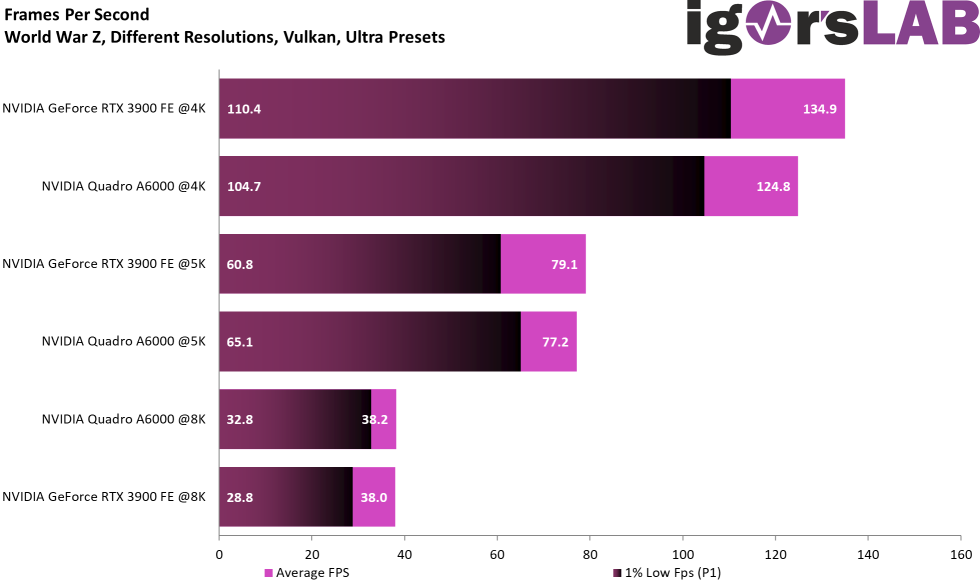
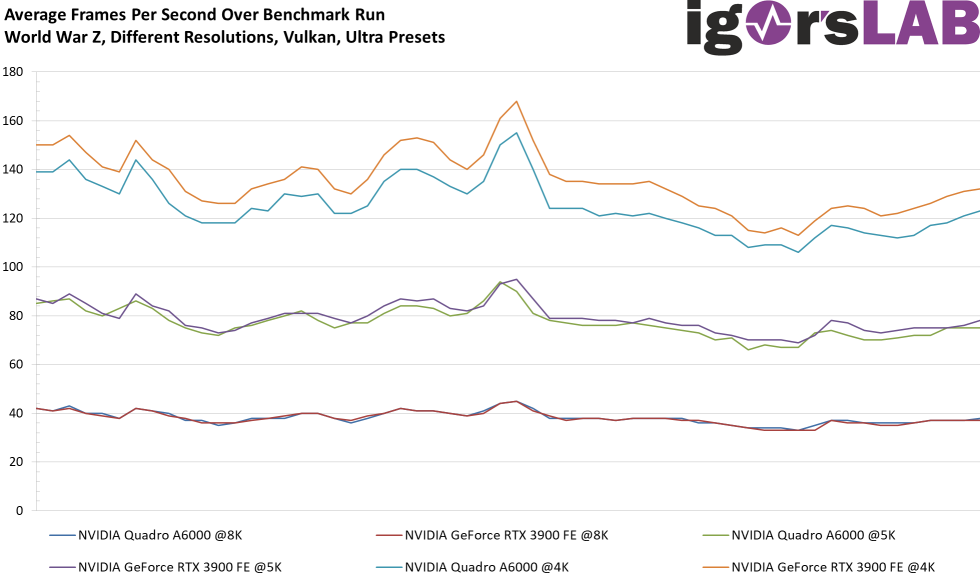
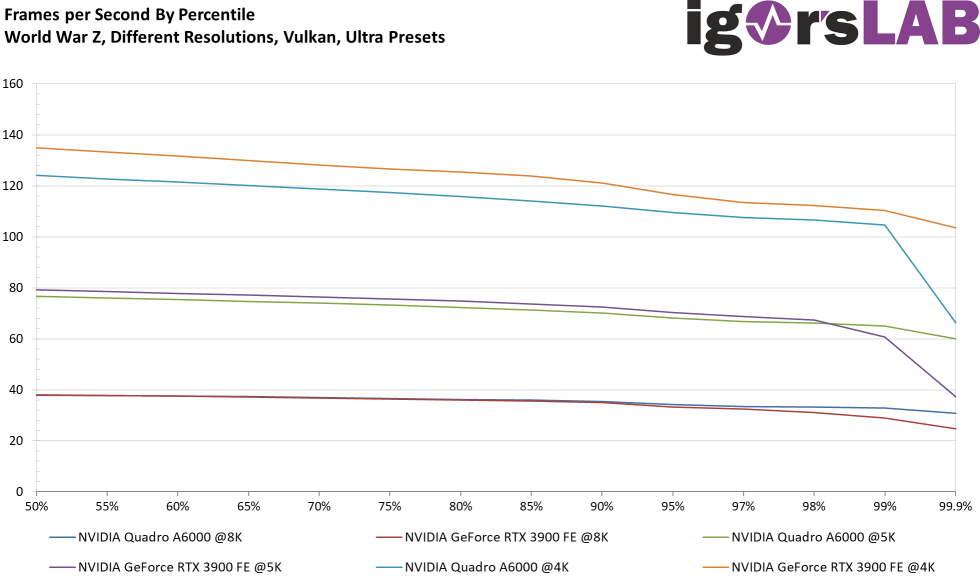
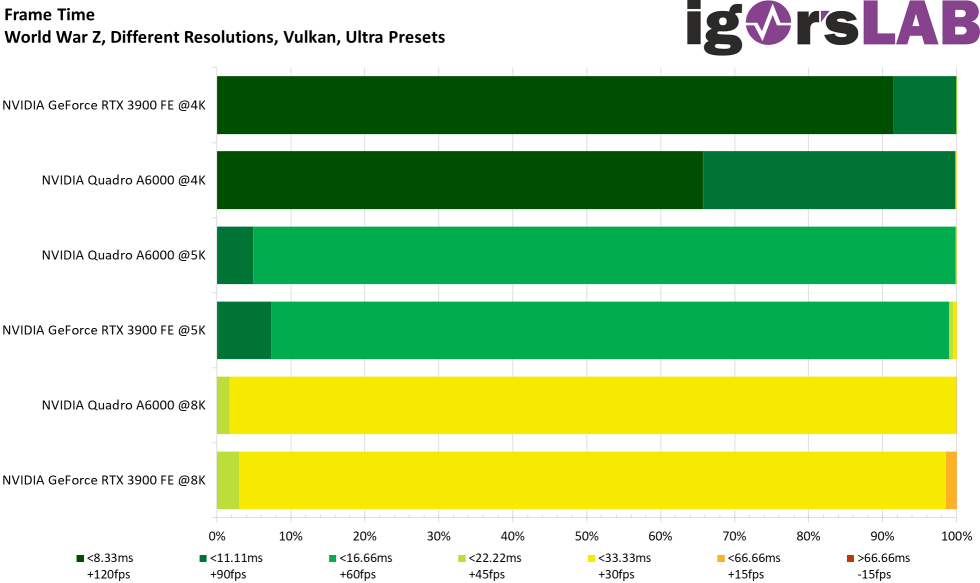
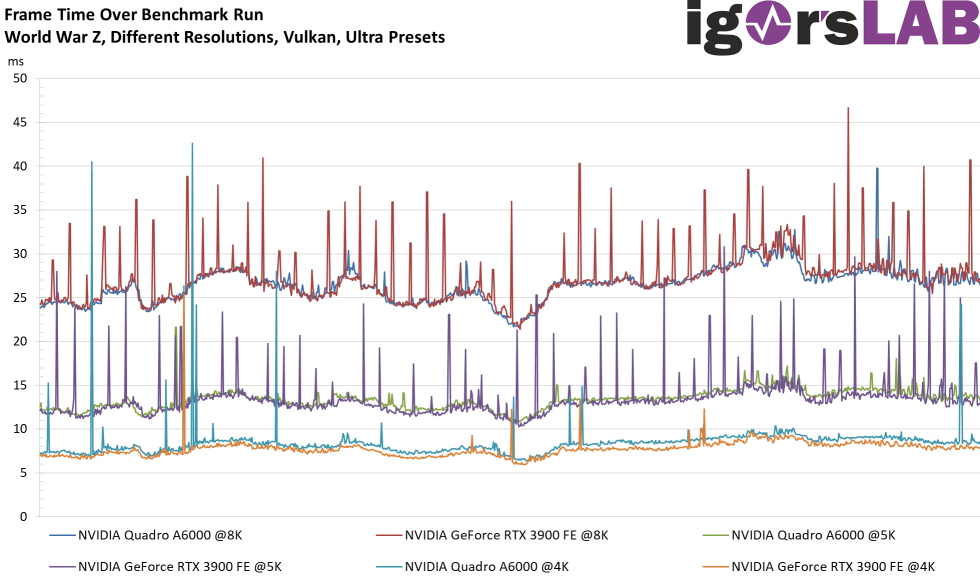
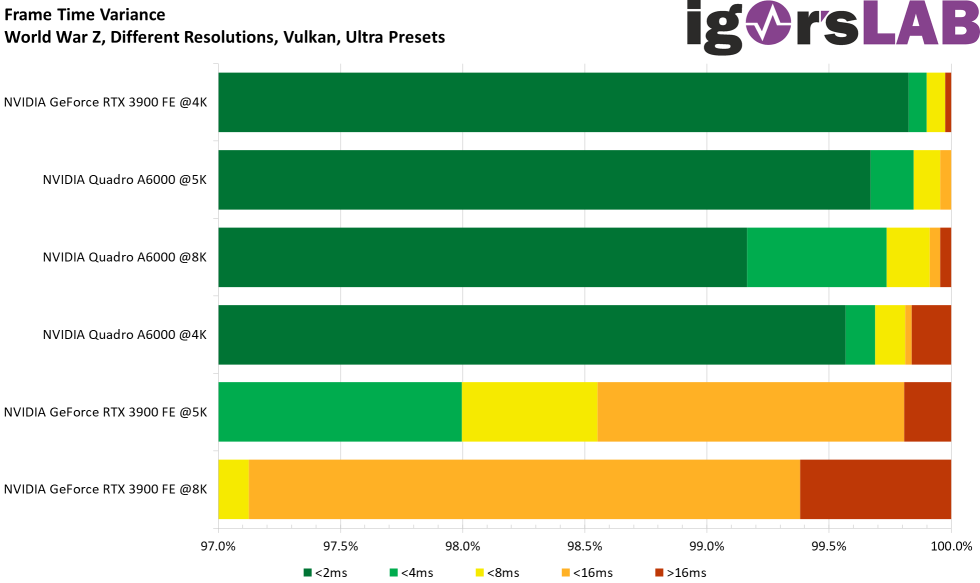
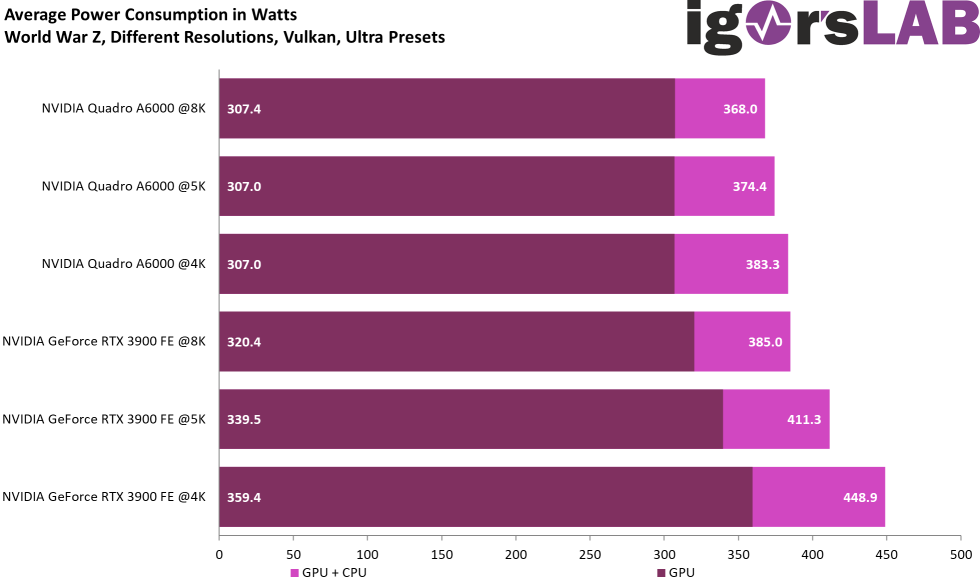
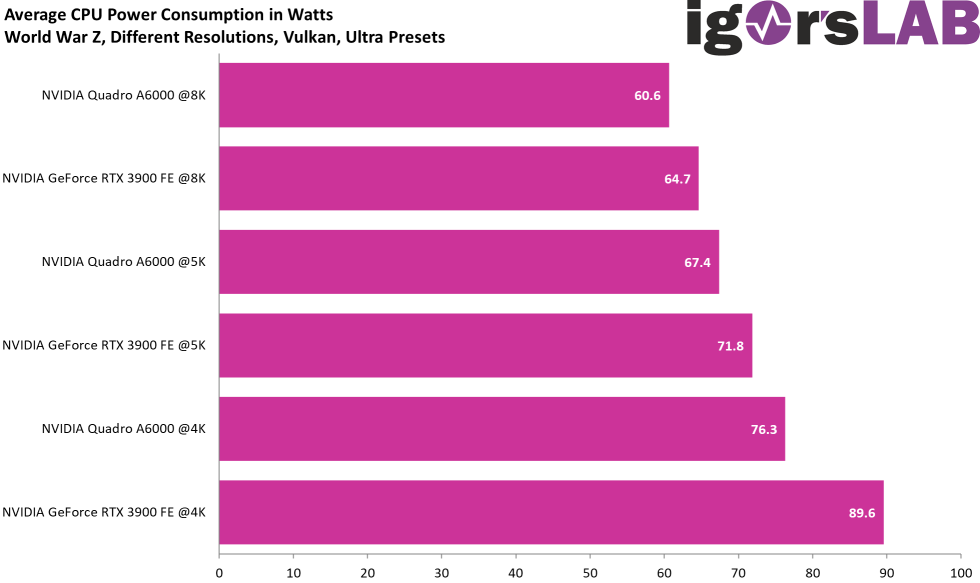
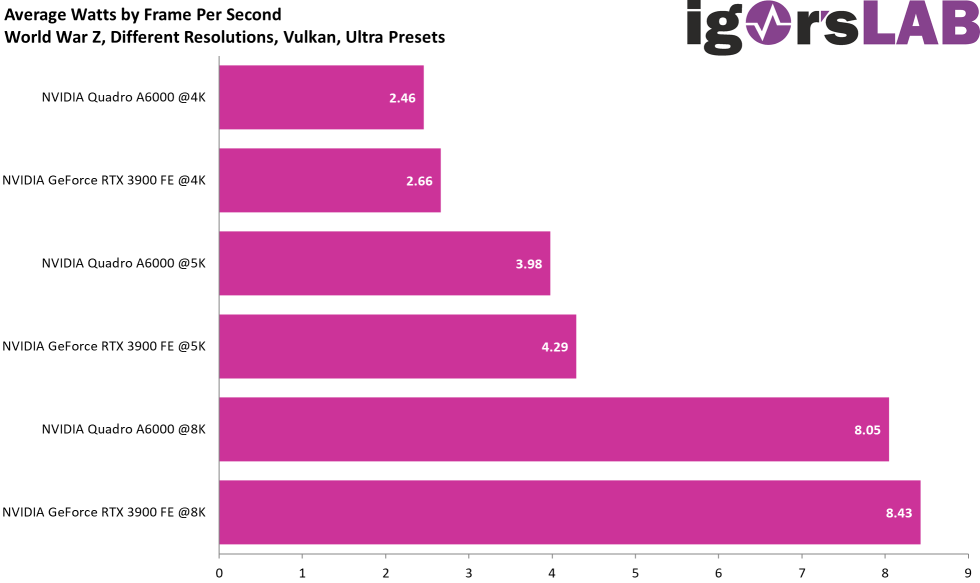
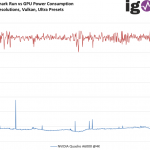
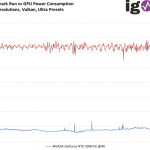
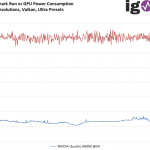
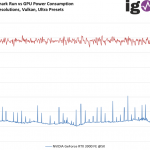
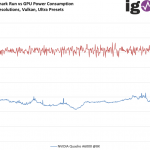
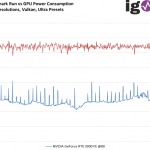

















32 Antworten
Kommentar
Lade neue Kommentare
Veteran
Urgestein
Urgestein
Veteran
1
Veteran
Mitglied
Veteran
Urgestein
Urgestein
Urgestein
Mitglied
Urgestein
Veteran
Veteran
Mitglied
Urgestein
Alle Kommentare lesen unter igor´sLAB Community →